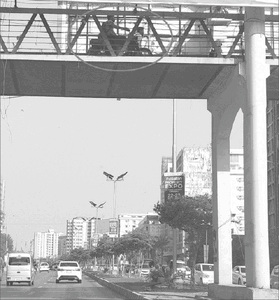THIS refers to the editorial ‘Growing power crisis’ (June 30). Pakistan has been facing a serious electricity crisis for the last few months, as loadshedding has intensified across the country. The power deficit in the National Transmission and Despatch Company (NTDC) system is currently recorded at over 7,000MW, and the supply-demand gap is likely to widen in the coming days due to fast growing demand for electricity due to hot weather, and delays in fuel supply.
The people, already overburdened with highly inflated electricity bills, have to put up with 8-10 hours of loadshedding daily in major cities, including Islamabad, Lahore, Multan and Faisalabad, while small towns, rural areas and feeders in major cities categorised as high-loss recovery areas face up to 14 hours of blackouts. Karachi, too, is suffering from prolonged power outages as the system has a deficit of over 800MW owing to disrupted fuel supplies.
The large-scale loadshedding in the national system has crippled civic life as well as industrial, trade and commercial activities. The industrial sector is subjected to record 10-hour outages, while industrial captive power plants are deprived of natural gas, with a multiplier effect on the national economy.
There have been protest demonstrations in Karachi, Rawalpindi, Gujranwala, Peshawar and a few other cities, demanding reduction in the loadshedding hours that remain unscheduled. The political unrest is another important dimension of the prevailing power crisis.
The existing installed power generation capacity from all resources is 34,501MW (NTDC system), of which the net or dependable capacity is estimated to be about 30,000MW, which is more than the demand during peak hours these days. While the government no more shares the statistics of daily power generation and demand with the public on a regular basis, the generation recorded on July 3 was 21,231MW, which is disproportionate to the installed capacity. The suppressed demand is said to be around 28,000MW.
Interestingly, the NTDC system had evacuated record 24,566MW electricity during 2021. In spite of the addition of significant power-generation capacity in the last few months — particularly that of hydropower and nuclear energy resources — the total generation, instead of improving, has steeply declined, with the existing capacity being grossly underutilised.
The power situation has worsened primarily due to inadequate transmission capacity, flawed strategy, imprudent use of available resources, and transmission and distribution losses. The power sector circular debt has now swelled to Rs2.46 trillion, and the independent power producers (IPPs) are facing difficulties in servicing their dues and, therefore, have cut down generation drastically despite huge reliable existing capacity.
Due to financial constraints, the Pakistan State Oil (PSO) is unable to provide adequate oil supplies to the powerhouses, and the same is the situation with gas supplies. Power plants are not getting liquefied natural gas (LNG), furnace oil or imported coal as per their requirements. Practically, total reliance is on hydropower generation capacity of 9,873MW, but the water reservoirs are not yet full, like in Tarbela, due to lesser rains this season though river flows have increased in recent days.
Obviously, the government has failed to address energy crisis effectively. It has paid no serious attention to the mismanagement, inefficiencies and a host of other institutional issues of the power sector. Most importantly, laxity by the government has resulted in increased technical and collection losses, or electricity theft.
Energy conservation measures, such as restricted timing for commercial activities in the evening, did not yield positive results in the past and would not be helpful now.
In short, there is no respite from massive electricity loadshedding in the foreseeable future. The biggest challenge for the government is to control the ever-increasing power sector circular debt, which cannot be managed in a short span of time given the present financial crisis.
Sadly, adequate electricity at affordable price remains a distant dream for the country’s consumers in the wake of fluctuating oil and gas prices. Will there be an end to this agony?
Hussain Ahmad Siddiqui
Islamabad
Published in Dawn, July 18th, 2022

































